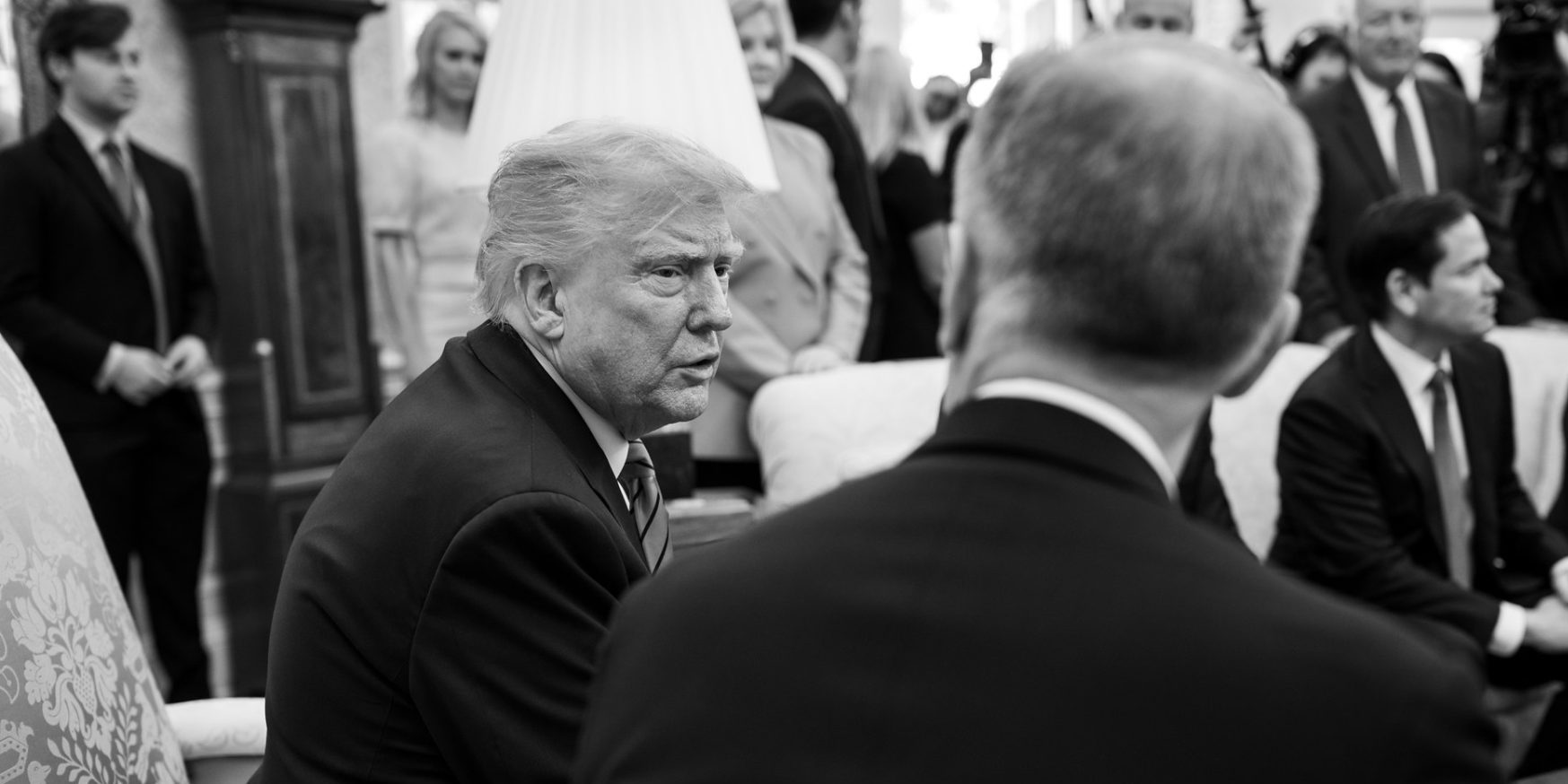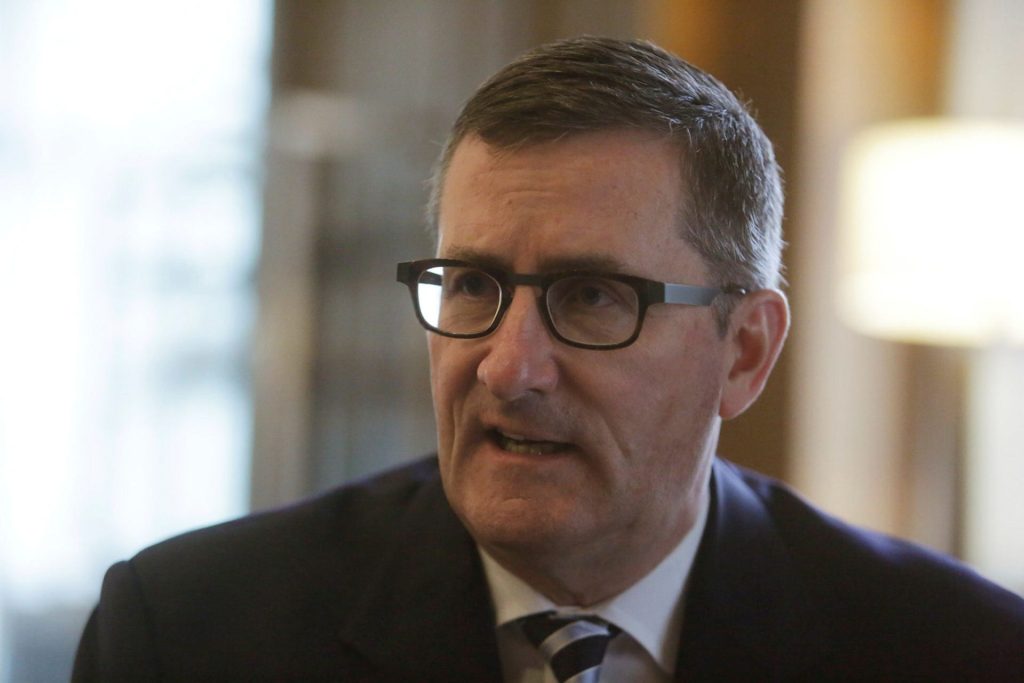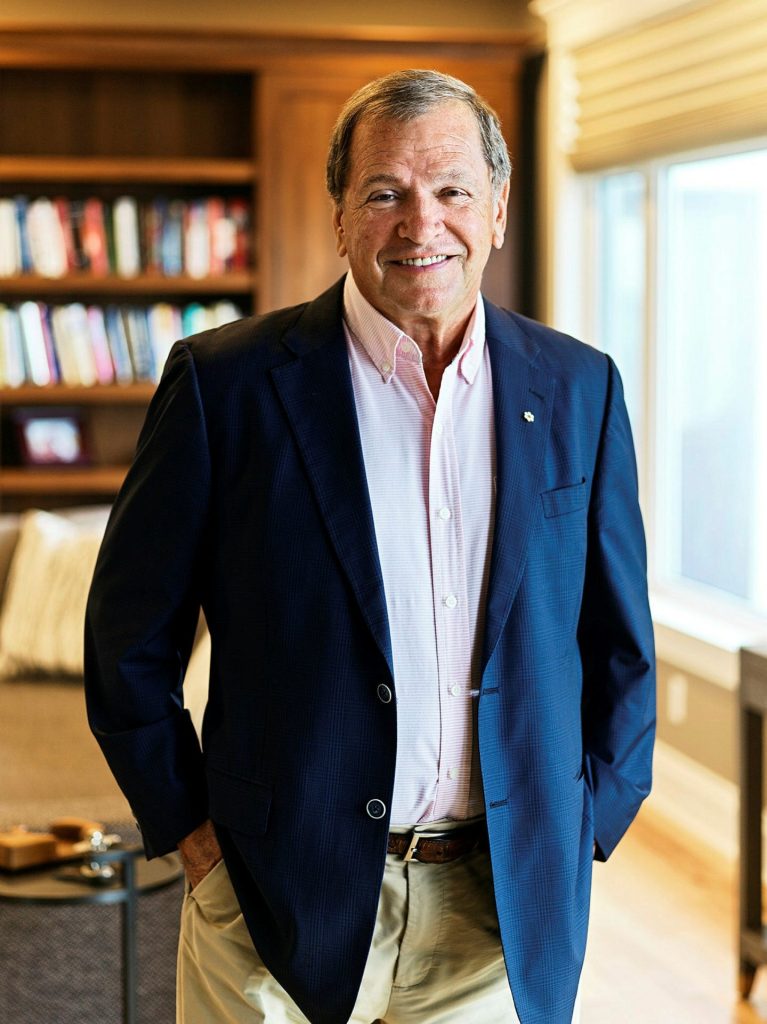Tariff export quotas could spare Canada pain from U.S. and serve as negotiating tactic with Trump, says Hampson

The endless rounds of negotiations between Canada and the United States regarding tariffs could take a dramatic turn if Prime Minister Mark Carney’s government offers American President Donald Trump’s administration a cap on what it exports south of the border, argues Fen Hampson, a professor of international affairs at Carleton University, and co-chair of the Expert Group on Canada-U.S. Relations.
In a paper published by Policy Magazine, Hampson wrote that a tariff rate quota (TRQ)-based approach would “set a ceiling for managed trade,” and that tariffs would “only kick in if the quota is exceeded.”
In an interview, the former director of Carleton’s Norman Paterson School of International Affairs said that “the focus in negotiations has been very much on tariff rates and bringing them down,” and that TRQs would “reframe” the discussions.
“Unless there is a breakthrough in talks soon, or relief through successful court challenges against presidential outreach in Trump’s use of the International Emergency Economics Powers Act to justify his sweeping tariffs [including one heard before the U.S. Court of Appeals for the Federal Circuit on July 31 involving a lawsuit on the 25-per-cent tariff on Canadian and Mexican imports imposed in March], further trouble on the trade front may arise unless we adjust our strategy,” Hampson wrote in his Policy essay.
“The time has come for Canadian negotiators to consider redirecting talks away from tariffs” to a tariff rate quota-based trade.
Hampson said that, in June, the United Kingdom signed an Economic Prosperity Deal with the U.S. that includes a TRQ arrangement for automobiles, with a reduced tariff rate of 10 per cent on up to 100,000 vehicles imported annually, and the same rate for auto parts for use in U.K.-made vehicles.
He said the goal for Canada would be to have zero tariffs “on an agreed volume of trade.”
“We’re in a strong position for bargaining leverage because the U.S. sells more assembled cars to us than we sell to them,” said Hampson.
TRQs would be particularly beneficial to the auto sector because “the profit margins are around seven per cent in car production, so a 10-per-cent tariff just kills that,” he said.

“Our auto industry has been on a big decline since the 1990s when we were assembling over three million vehicles in 1995, and it’s now just over a million,” said Hampson. “Much of the trade has shifted to auto parts.”
He said that quota levels are already recognized in side letters to the Canada-United States-Mexico Agreement (CUSMA) and Sec. 232 tariffs, which empower the president to invoke in protecting national security.
In a recent interview with Bloomberg News, British Columbia Premier David Eby said “that, for the first time, there’s some willingness to have a conversation about” from the U.S. about “a fixed amount of lumber that gets to come from Canada.”
Earlier this month, the U.S. Department of Commerce announced countervailing duties on Canadian softwood lumber of 35 per cent just days after Carney (Nepean, Ont.) unveiled $1.2-billion in support for the Canadian industry.
Hampson said that if TRQs end up on the table for softwood lumber, they should also apply to other Canadian exports, such as steel, aluminum, copper and assembled automobiles.
In April, the Trump administration slapped 25-per-cent tariffs on Canadian-made passenger vehicles on the value of all non-U.S. content. Canada responded with 25-per-cent tariffs on U.S. vehicles that are not CUSMA-compliant.
Two months later, American tariffs on Canadian steel and aluminum doubled from 25 per cent, announced in March, to 50 per cent.
On Aug. 1, the U.S. also imposed 50-per-cent tariffs on semi-finished copper.

Hampson said that on Canadian steel and aluminum, which is in great demand from U.S. manufacturers, Canada could pitch the idea of removing tariffs and imposing quotas.
He explained that if volumes were to exceed that quota, then a tariff rate would kick in, which could be graduated at 10 per cent to start.
To protect this country’s steel industry, Carney announced in July that the federal government would halve the tariff rate quota levels for steel products from countries without free trade agreements with Canada from 100 per cent to 50 per cent of 2024 steel import volumes.
Following the recent first ministers’ meeting, Ontario Premier Doug Ford called for the quota to be lowered to 25 per cent to give Canada “a competitive advantage,” he told reporters.
“The U.S. uses 70 to 80 per cent of their steel. Do you know where Canada is, folks?” he said. “We’re at 35 per cent. So, 65 per cent of the steel that’s coming into our country is coming in from foreign countries.”
Last year, more than 91 per cent of Canadian iron and steel valued at $12.1-billion was exported to the U.S., according to Statistics Canada.
Hampson said that, with quotas, domestic producers “capture the benefit of any price increases.”
“The steel producers probably wouldn’t like it because nobody wants volumes capped,” he said. “But if the alternative is a punitive 50-per-cent tariff, I can tell you what their preference would be.”
Hampson added that a TRQ arrangement could also include a sunset clause allowing Canada and the U.S. to review the terms of the deal when there is a different administration in the White House that “might be more open to Canada.”
He noted that Canada might have added leverage to advocate for TRQs through the growing dissatisfaction from the American Big Three automakers—General Motors, Ford and Stellantis (formerly Chrysler)—over U.S. tariffs against Canadian-made cars.
In his Policy Magazine paper, Hampson said that quotas also include a “psychological dimension.”
“By framing the conversation around TRQs as a way to prevent catastrophe, short-term loss to the U.S., rather than asking for concessions or touting mutual benefits, Canadian negotiators tap directly into” the situations involving bullies “like Trump [who] are far more moved by the threat of immediate, visible losses than by the promise of future gains,” Hampson wrote.
“Trump’s instinct is to avoid any outcome that could be seen as him ‘losing ground’ or letting others win at his expense. Highlighting that tariffs will cost American jobs, provoke factory shutdowns, and potentially destroy supply chains right now, not years in the future, puts the conversation in terms he cannot ignore. It reframes inaction or sticking with tariffs as a self-inflicted wound, rather than a show of strength.”
Said Hampson: “TRQs allow Trump to protect his ‘America First’ brand and avoid the stigma of immediate defeat: he can claim control, maintain leverage, and ensure future flexibility, all while averting costly blows to his own political constituencies. It channels his keen fear of loss—political and economic—into a pragmatic, face-saving solution.”
However, Frank McKenna, a former Canadian ambassador to the U.S., said there was “nothing new” in Hampson’s idea.
“Quotas are well known to our negotiating team and part of our arsenal. It very much depends on the size of the quota,” said McKenna, who was Canada’s senior envoy in Washington from 2005 to 2006.
“It also needs to be emphasized that Trump either wants revenue or industries to move to the U.S.,” he said, adding that TRQs do neither.

McKenna, who’s also a former Liberal premier of New Brunswick, noted that softwood lumber is “a special situation.”
“It has taken us 10 years to get [British Columbia] to accept quotas and the U.S. may not agree,” McKenna said.
David Adams, president and chief executive officer of the Global Automakers of Canada (GAC), said that while the CUSMA side letters regarding autos already address tariff rate quotas, Trump likely has little interest in applying them in a trade deal that might not even have a future within his administration.
“He seems to get a lot of energy from making tariff pronouncements, especially as they relate to the automotive industry,” said Adams, whose association represents vehicle manufacturers, except for the Big Three in the U.S.
Trump’s tariffs directly impact two GAC members—Toyota and Honda—that build cars in Canada.
“The federal government needs to look at every option to get out from underneath the 232 tariffs and ensure that we have an environment where there are zero tariffs paid on autos going into the United States,” said Adams.
The Hill Times





 LICENSING
LICENSING PODCAST
PODCAST ALERTS
ALERTS













